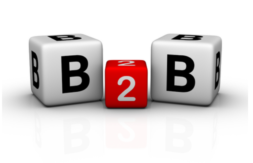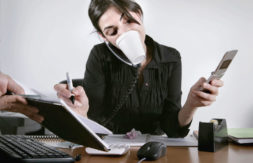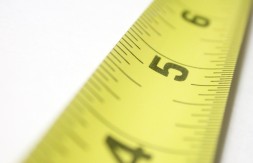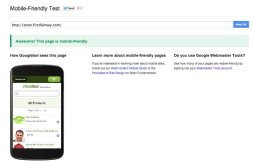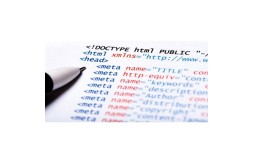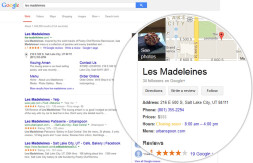Hug me, Don’t Squeeze Me – Four Rules To Help Determine Appropriate Frequency For Customer Communications

Guest Poster: Susan DeMatei, Wine Glass Marketing
One of the most common questions businesses ask about direct marketing is – how often should we talk to our customers? Controlling the frequency of communications that are sent to customers is a key aspect of any marketing strategy, and the big question is how often should you do it? Send marketing too often and you risk annoying the customers so that they unsubscribe; not often enough and you run the risk that they will forget they signed up to hear from you in the first place.
So how much is too much? The short and unhelpful answer is: it depends. The longer and more helpful answer is: it depends on your customers, the medium/channel through which you are contacting them, and your message.
Here are some basic guidelines to help you develop a marketing contact strategy that is right for you and your customers.
Rule #1: Provide Value.
Frequency is less important than relevance when trying to ensure that you don’t annoy your customers with over-communication. Engage customers with content that is informative, is easy to digest and adds value. Just like you might tire quickly of the “friends” that only call you when they need something, your database will tire quicker if you only ask them to buy, buy, buy. A sale or new release is always nice, but be sure to sprinkle your messages with some non-sales information they’re interested in. For wineries this may include information like recipes, event photos, serving tips, production information or vineyard news. For diabetic products or orthopedic foot products, for example, this may include medical and lifestyle information or comfort tips. As long as your communications are relevant to the recipients, they will tolerate a higher frequency of contact. (To determine what interests your customers, see Rule #3).
Rule #2: All Customers Are Not the Same
To ensure that each of your customers receives only relevant communication and therefore tolerates a higher frequency of contact, you must segment your database. While it may seem so much easier to send the same email, outbound and direct mail to everyone, you will enjoy far greater open rates, purchase rates and customer-retention rates if you take the relatively small bit of time to (a) separate out previous buyers, or Club members, or non-responders, or folks who bought one product but not another related product, and (b) tweak your messages slightly to suit each group or even exclude some groups from certain messages that may not be relevant to them. Segmentation works, and it really is worth your time.
To segment your database initially you may have to comb through order histories, event attendance, etc., and make assumptions about customers’ interests. Going forward, you might consider offering different levels of sign-ups to let the customers do the segmentation work for you. For instance, you could ask the customer at sign up, to check various areas of interest – for example, promotions, events, particular types of products, etc. As an alternative to requesting customers to identify areas of interest, you could ask your customers how often they want to hear from you. A simple check box or two during registration might be enough to ensure that the customer feels in control and gets precisely what has been requested.
Rule #3: Look at the Metrics.
There are no mysteries here: your customers’ behavior and responses will tell you what they are interested in and whether you are contacting them so infrequently that they forgot who you are, or if you’re contacting them too frequently and they’re sick of your sale emails.
Pay attention to whether customers click on links in your emails, what links they click on, and unsubscribe and open rates. Calculate campaign conversion rates (purchase rates) and email subscriber retention rates (# of emails sent minus bounce backs and unsubscribes, divided by the # of emails sent). The statistics provided in your email delivery program, combined with your tracking how many phone calls you get after sending a customer communication, can tell you almost everything you need to know about whether your communications are relevant and appropriately frequent. For telephone campaigns you can also track how many folks were receptive or not, and why.
Rule #4: Create a Marketing Calendar
To ensure that you follow rules 1, 2 and 3 it is essential to plan out your communications ahead of time. Frequency is irrelevant when a wine club member, for instance, sees an email for a flash sale, a club shipment alert, and a Spring sale email with three different prices for the same wine. Watch your promotions and messaging overlap, use consistent themes and branding, and ensure your most valuable clients get the most valuable offers and not vice-versa. Displayed is a portion of a messaging calendar that coordinates offers for email, the website, outbound and direct mail. If you have a tasting room or other storefront, make sure you coordinate the promotions you are running in store and on the web, as well. 
To Sum Things Up
So the strategy behind your frequency isn’t easy, but it is important. Over-mailing is a very effective way to lose subscribers! Under-mailing can result in lost revenue, which can be especially disappointing if you’ve spent a lot of time and money to convert new leads to newsletter subscribers.
So take your time and try out some combinations of messages (testing offer or information value), customers (segments) and frequency (your calendar). If you test, remain responsive to what your analytics are telling you and modify your calendar accordingly, you will likely find the sweet spot for your customers and channels, and you will be rewarded with engaged and happy customers, along with strong sales.
Message from Nexternal – Nexternal offers robust database segmentation opportunities as well as an API which allows you to create detailed customer sign up lists and populate that information directly into Nexternal. Please give your Nexternal Account Manager a call to discuss these software capabilities. And of course feel free to contact Susan at Wine Glass Marketing to help you analyze your current statistics, create an effective marketing communications calendar and use your resulting analytics to further enhance your marketing strategies to maximize revenue.

